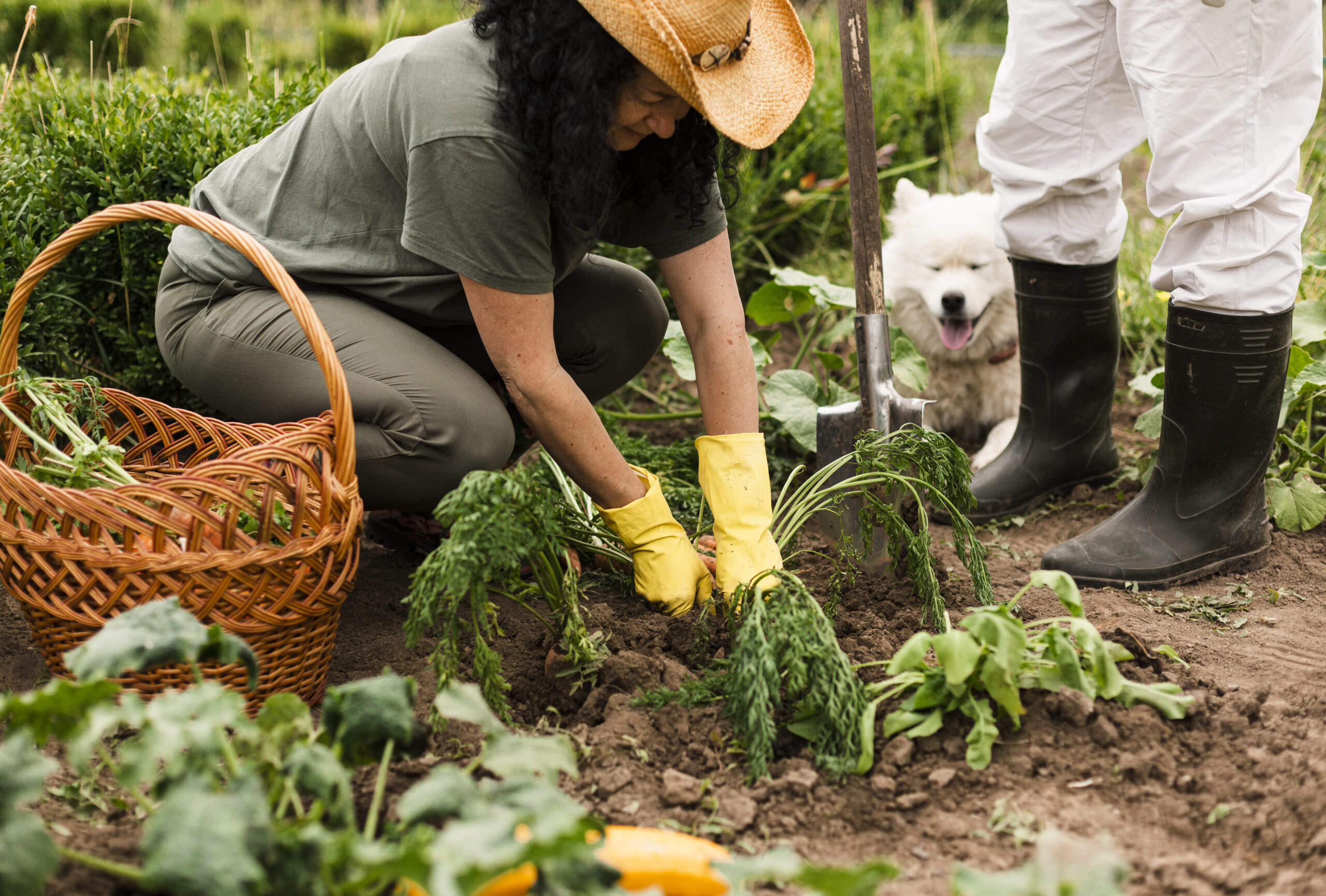Organic gardening is more than just a trend; it’s a commitment to cultivating plants in harmony with nature. By growing vegetables and fruits without the use of synthetic chemicals, you’re not only producing healthier food for your family but also contributing to the well-being of the environment. Whether you’re a seasoned gardener or a beginner, understanding the principles of organic gardening can lead to a more productive and satisfying gardening experience.
What is Organic Gardening?
Organic gardening is the practice of growing plants without synthetic fertilizers, pesticides, or genetically modified organisms (GMOs). Instead, organic gardeners rely on natural methods to enrich the soil, control pests, and promote plant health. The focus is on creating a balanced ecosystem where plants, insects, and soil microorganisms work together to foster growth.
The Benefits of Organic Gardening
Organic gardening offers numerous benefits, both for the gardener and the environment:
- Healthier Produce: Without chemical residues, organically grown vegetables and fruits are healthier and often more flavorful.
- Environmental Protection: By avoiding synthetic chemicals, organic gardening reduces pollution in the soil, water, and air.
- Soil Health: Organic practices like composting and crop rotation improve soil fertility and structure, leading to more resilient plants.
- Biodiversity: Organic gardens often support a wider range of beneficial insects, birds, and other wildlife, contributing to a healthier ecosystem.
Starting with Organic Gardening
Embarking on an organic gardening journey requires planning, patience, and a commitment to learning. Here’s how to get started:
1. Choose the Right Location
The first step in organic gardening is selecting a suitable location for your garden. Most vegetables and fruits need at least 6-8 hours of sunlight per day. A well-drained spot with good air circulation is ideal. If space is limited, consider container gardening or vertical gardening techniques.
2. Prepare the Soil
Healthy soil is the foundation of a successful organic garden. Start by testing your soil to determine its pH and nutrient levels. You can use a home testing kit or send a sample to a local extension service.
Once you know your soil’s composition, you can improve it by adding organic matter like compost, aged manure, or leaf mold. These materials enrich the soil with nutrients and improve its structure, making it more conducive to plant growth.
3. Choose Organic Seeds and Plants
To grow a truly organic garden, start with organic seeds or plants. Look for certified organic products, which are grown without synthetic chemicals or GMOs. Heirloom varieties are also a great choice, as they are often more resilient and flavorful than modern hybrids.
4. Practice Crop Rotation
Crop rotation is a key principle in organic gardening. By rotating crops each season, you can prevent the buildup of pests and diseases in the soil. For example, follow a nitrogen-fixing crop like beans with a heavy feeder like tomatoes to maintain soil fertility.
5. Composting
Composting is the process of recycling organic waste, such as kitchen scraps and yard clippings, into nutrient-rich compost. Compost is a vital component of organic gardening, providing plants with essential nutrients and improving soil structure.
To start composting, set up a compost bin or pile in a convenient location. Add a mix of green materials (like vegetable scraps) and brown materials (like dried leaves) in layers. Turn the pile regularly to aerate it, and within a few months, you’ll have rich, dark compost to add to your garden.
6. Natural Pest Control
One of the challenges of organic gardening is controlling pests without synthetic chemicals. Fortunately, there are many natural methods to keep pests in check:
- Beneficial Insects: Encourage beneficial insects like ladybugs and predatory beetles that prey on harmful pests. Planting flowers like marigolds and daisies can attract these helpful insects.
- Companion Planting: Some plants naturally repel pests. For example, planting basil near tomatoes can deter aphids and other insects.
- Physical Barriers: Use row covers, netting, or insect barriers to protect plants from pests.
- Hand-Picking: For small infestations, hand-picking pests like caterpillars or beetles can be effective.
7. Watering Wisely
Water is essential for plant growth, but overwatering can lead to root rot and other issues. Water your garden deeply but infrequently, aiming to keep the soil consistently moist but not waterlogged. Early morning watering is best, as it allows the plants to dry off during the day, reducing the risk of fungal diseases.
Drip irrigation systems or soaker hoses are excellent choices for organic gardens, as they deliver water directly to the roots, minimizing waste and reducing the likelihood of disease.
8. Mulching
Mulching is the practice of covering the soil with a layer of organic material, such as straw, wood chips, or grass clippings. Mulch helps retain moisture, suppress weeds, and regulate soil temperature.
In an organic garden, mulch also breaks down over time, adding valuable organic matter to the soil. Be sure to choose organic mulch materials, and avoid using chemically treated wood chips or grass clippings from lawns treated with pesticides.
9. Weed Control
Weeds compete with your plants for nutrients, water, and sunlight. In organic gardening, you can manage weeds without chemicals by:
- Mulching: As mentioned earlier, mulch helps prevent weeds from sprouting.
- Hand Weeding: Regular hand weeding is effective, especially if done before weeds go to seed.
- Hoeing: A sharp hoe can quickly remove young weeds before they become established.
10. Harvesting and Storing
Harvesting is the reward for your hard work, and doing it at the right time ensures the best flavor and nutrition. Pick vegetables and fruits when they are ripe, but not overripe. Use proper storage methods, such as canning, freezing, or drying, to preserve your harvest for the off-season.
Conclusion
Organic gardening is a rewarding and sustainable way to grow your own vegetables and fruits. By following these principles, you can create a thriving garden that produces healthy, chemical-free food. It may take some time to learn and perfect these techniques, but the effort is well worth it. Not only will you enjoy fresh, delicious produce, but you’ll also contribute to a healthier planet. Happy gardening!




